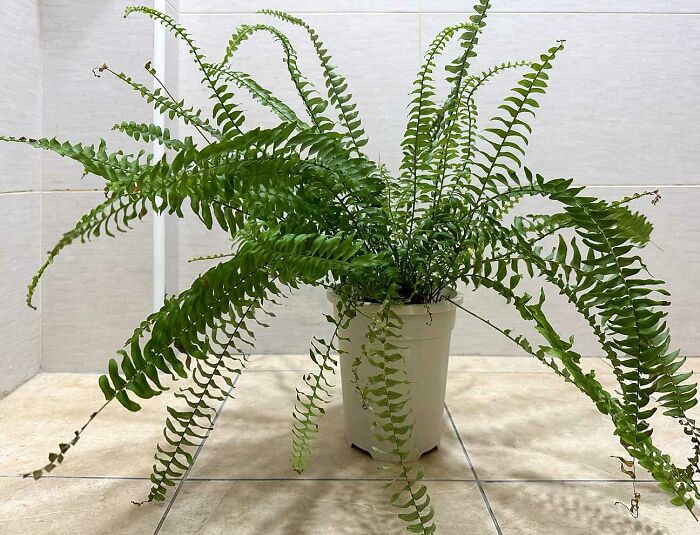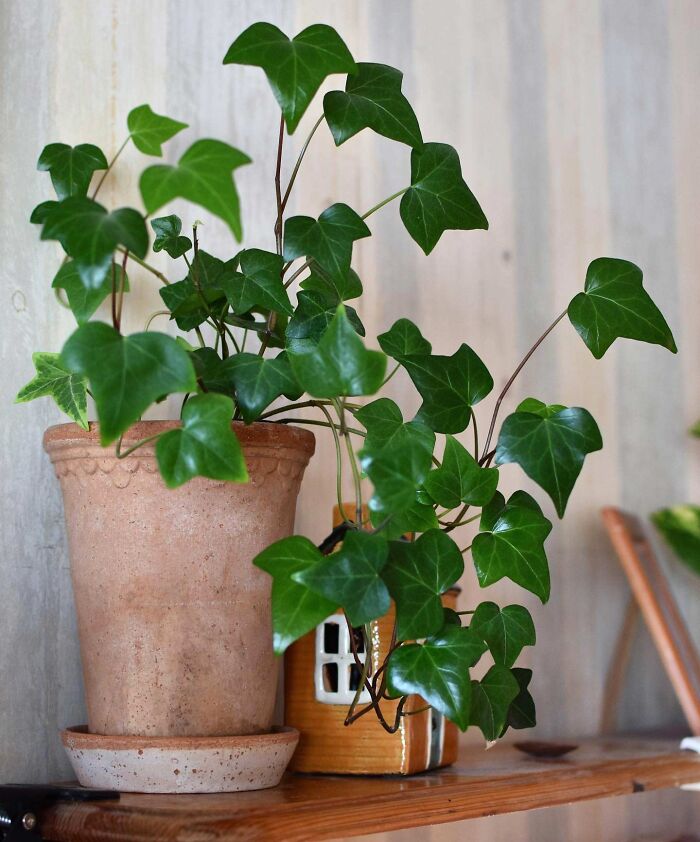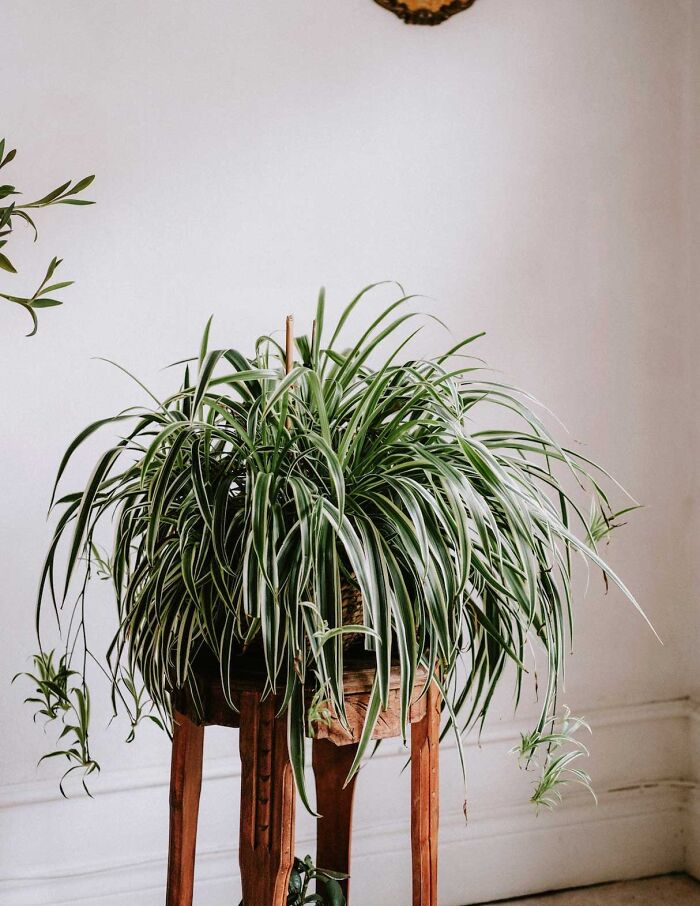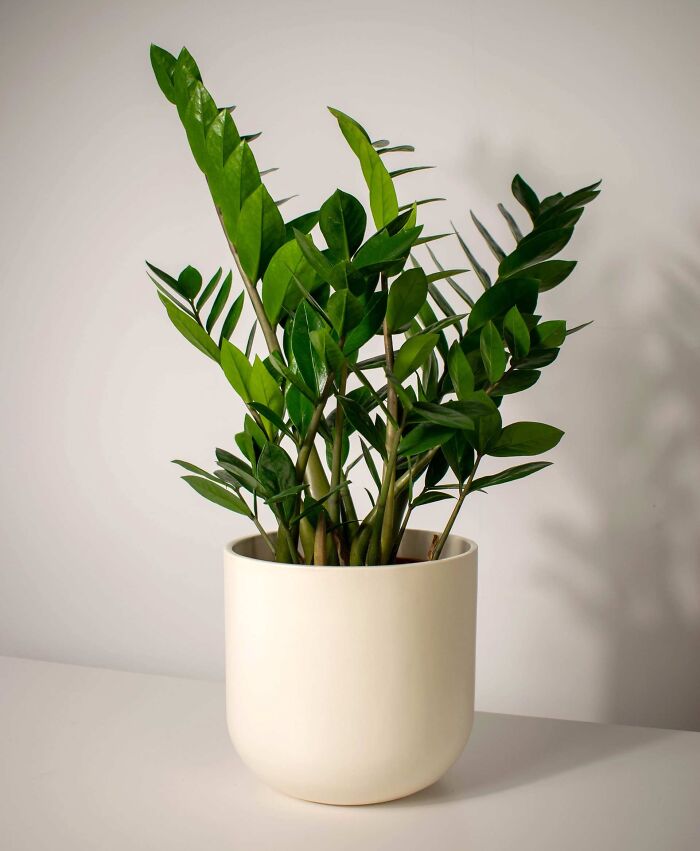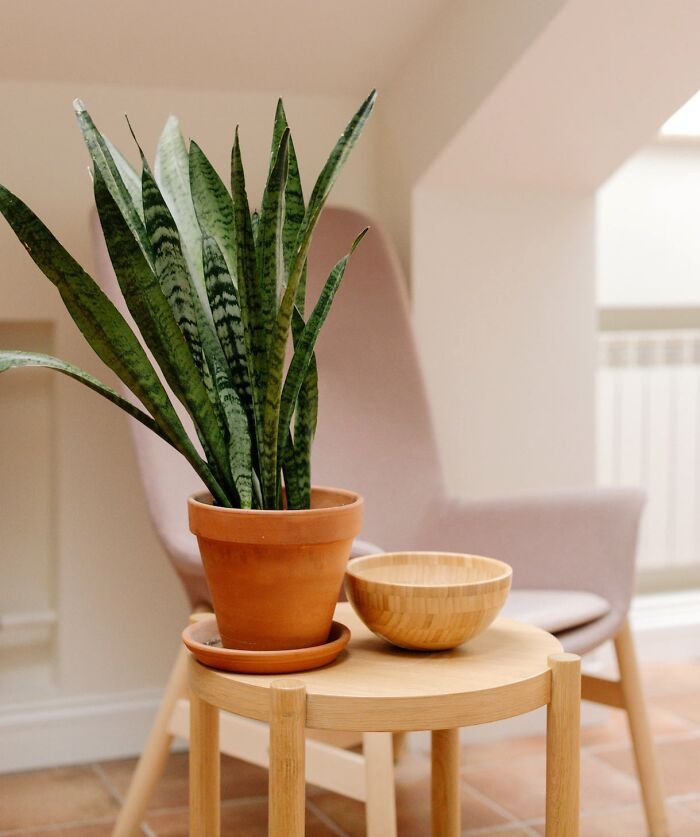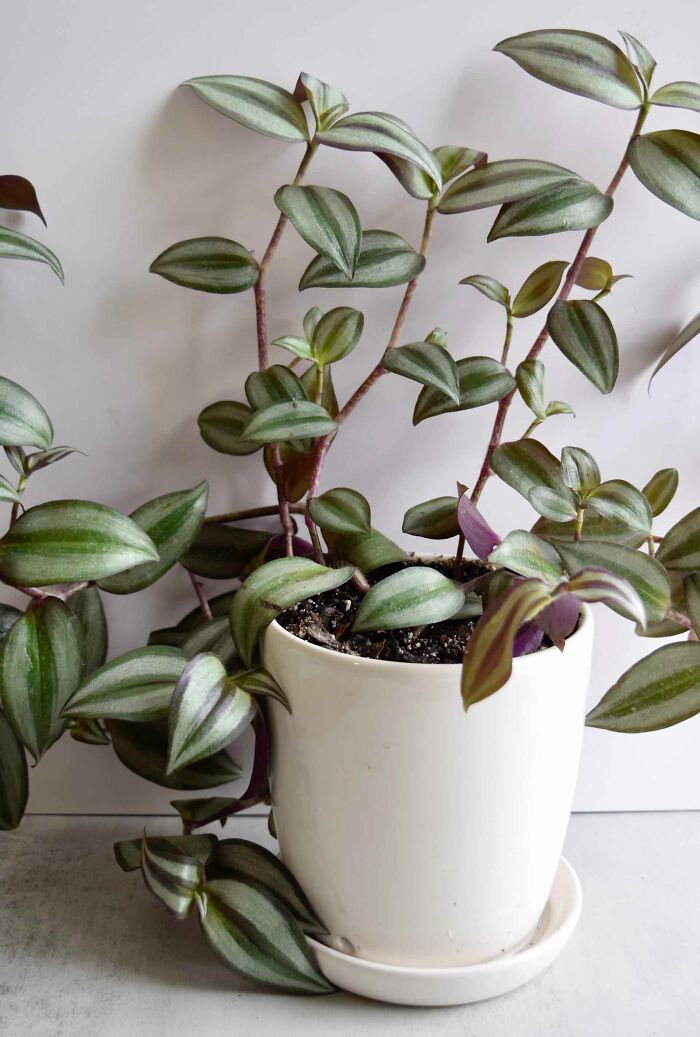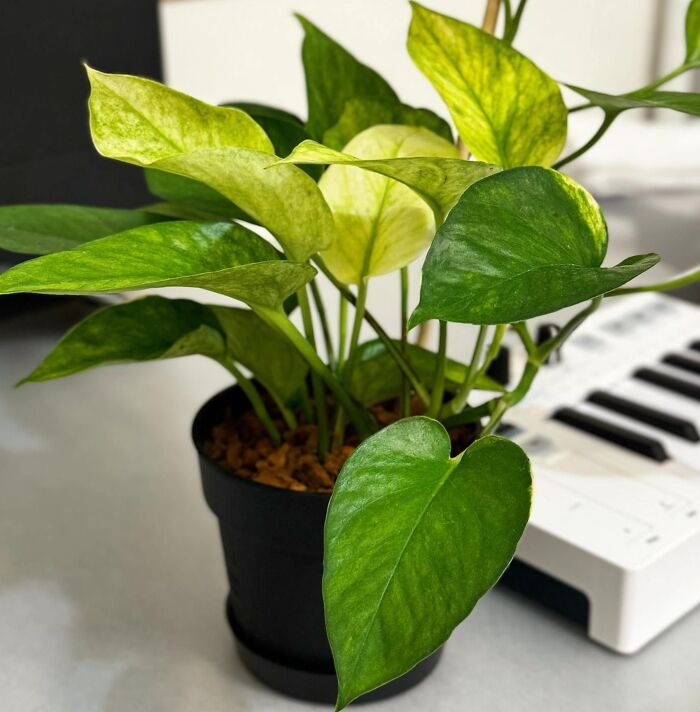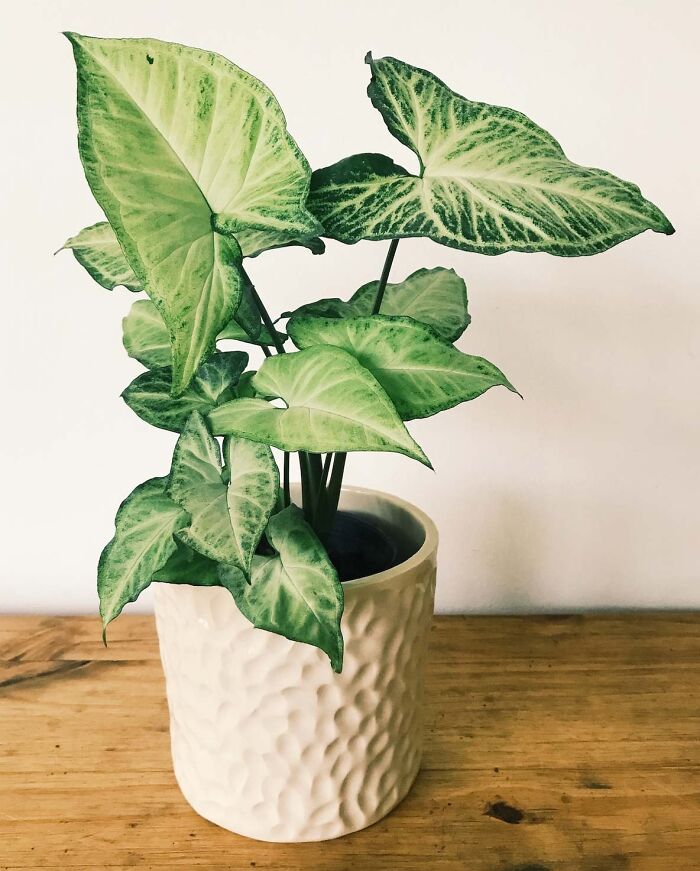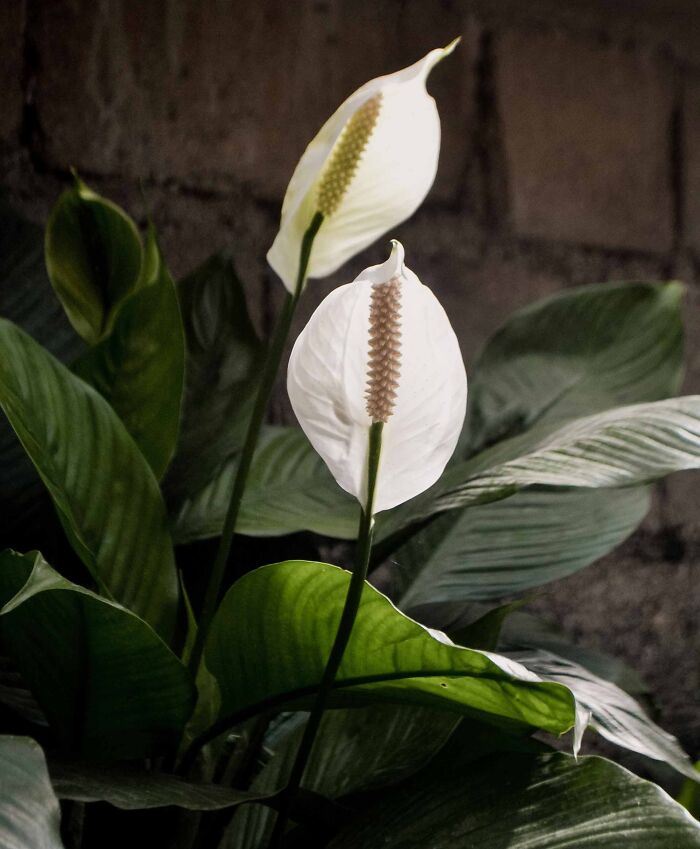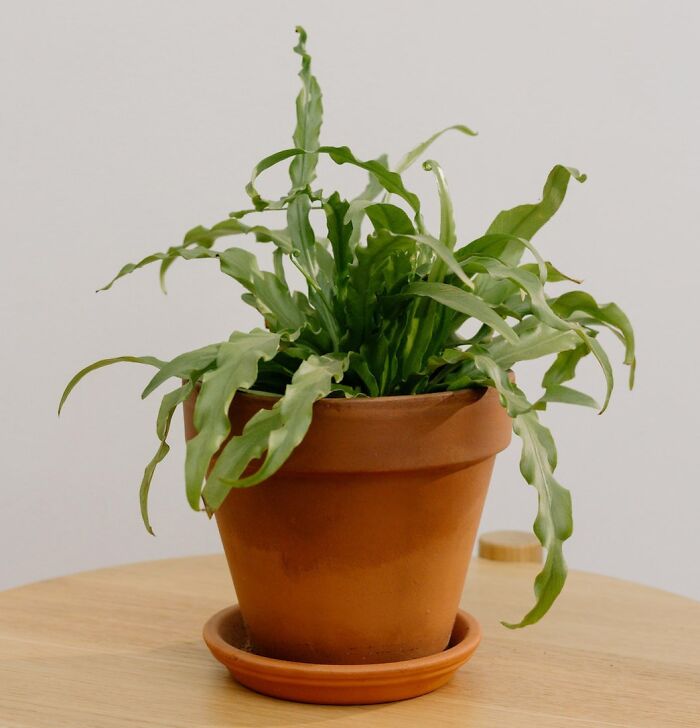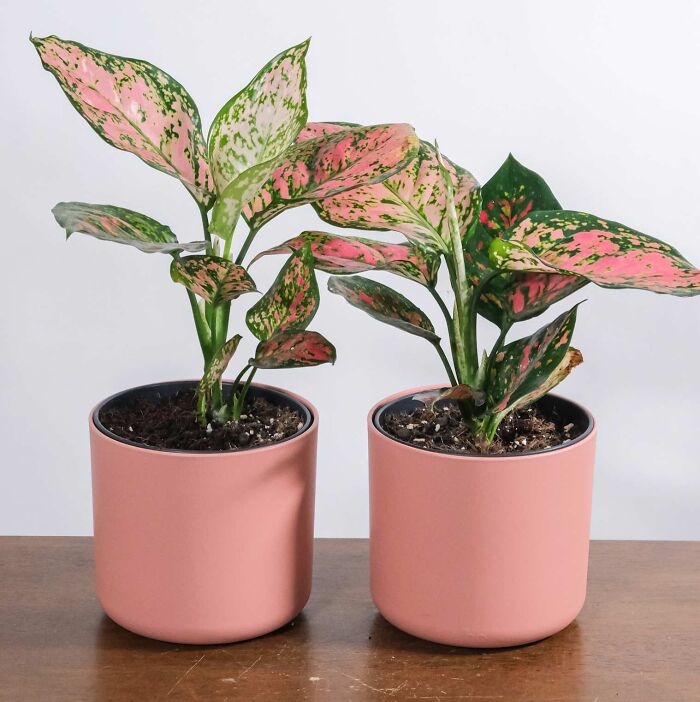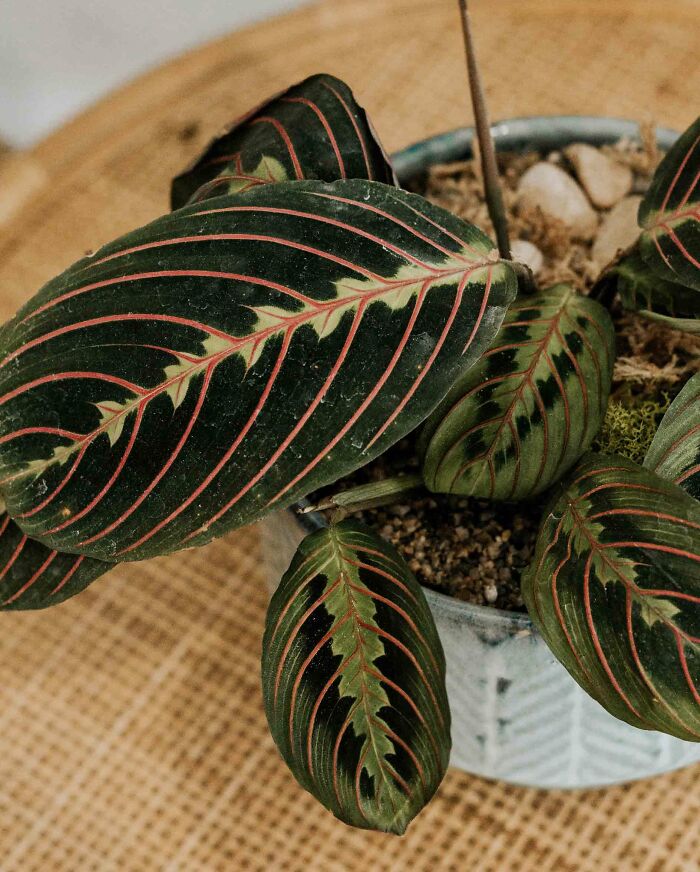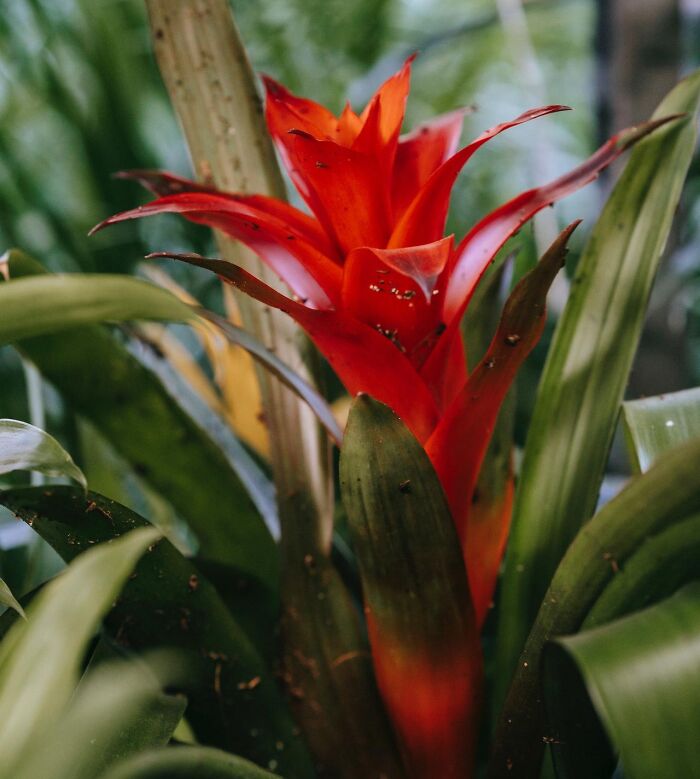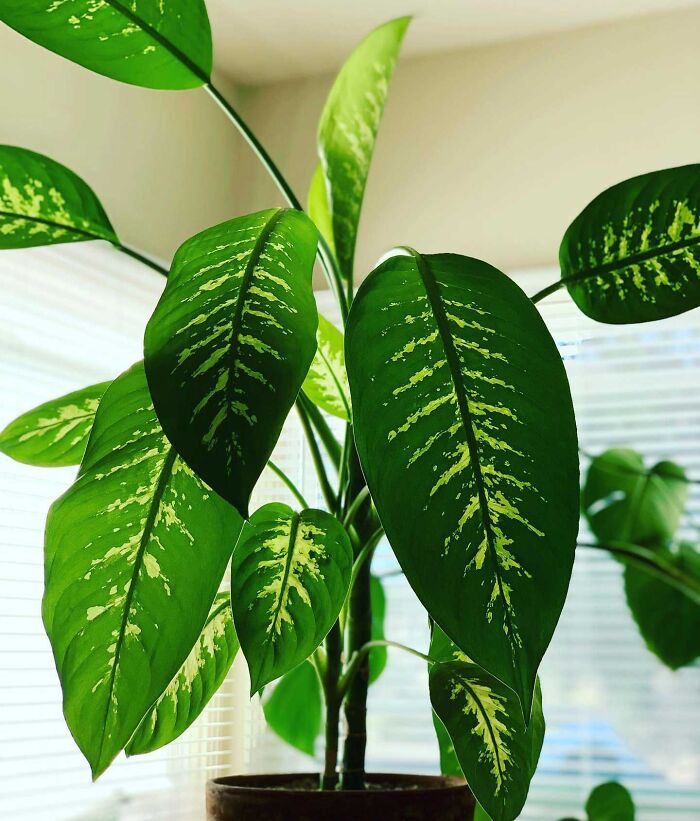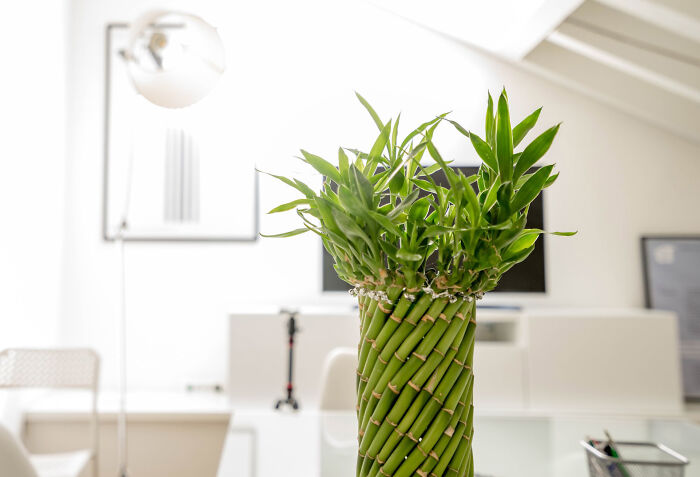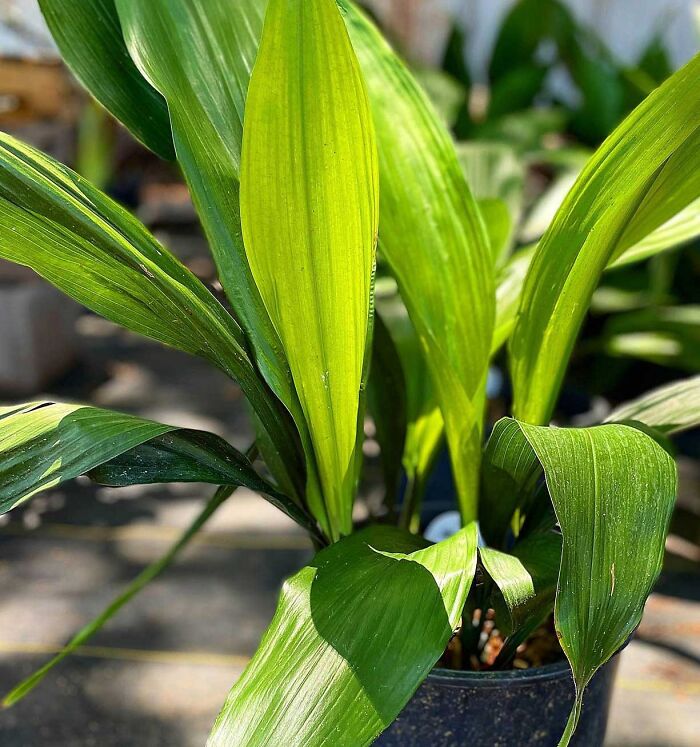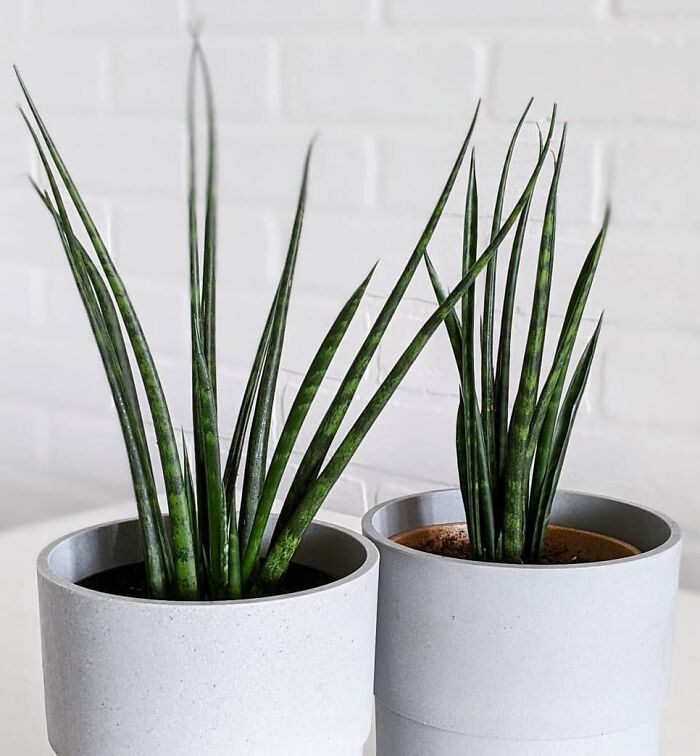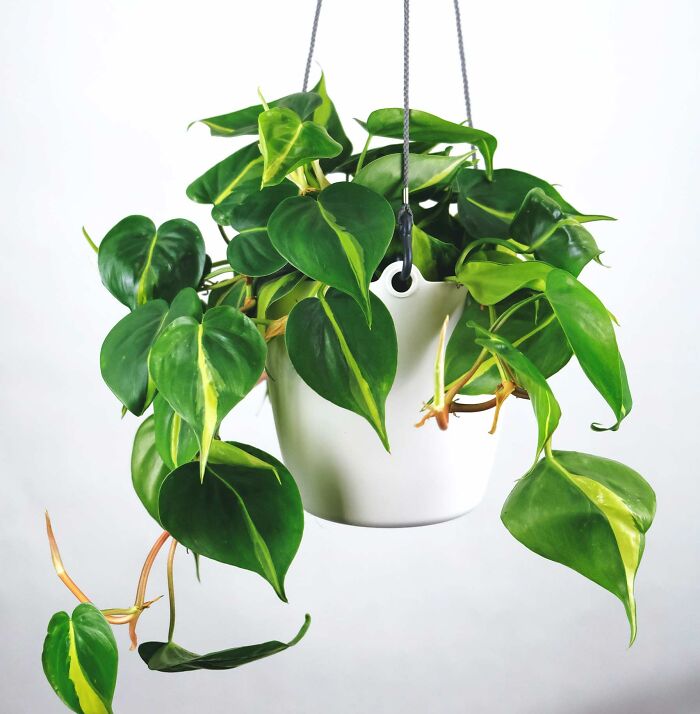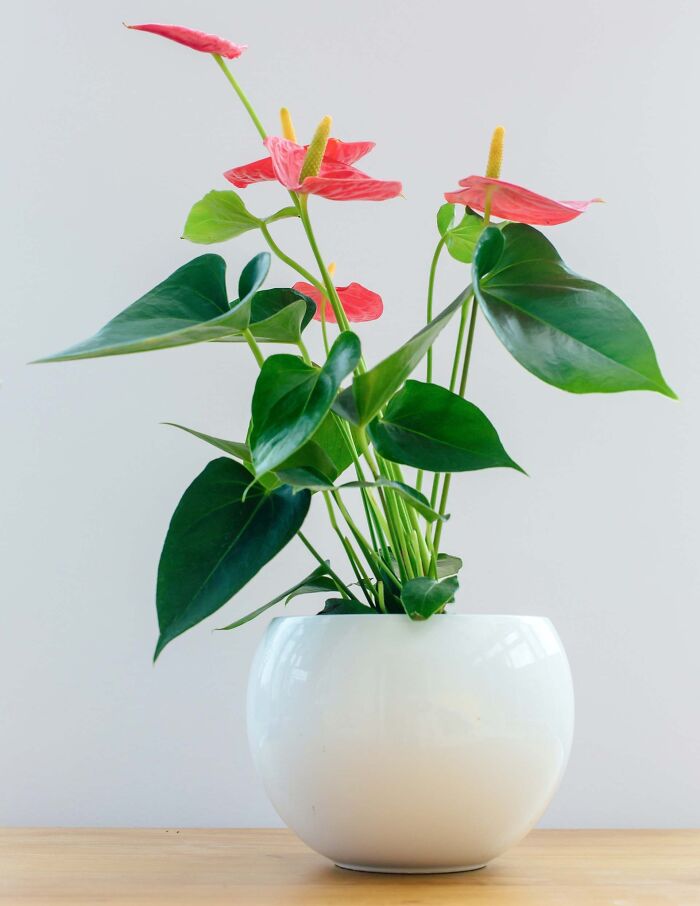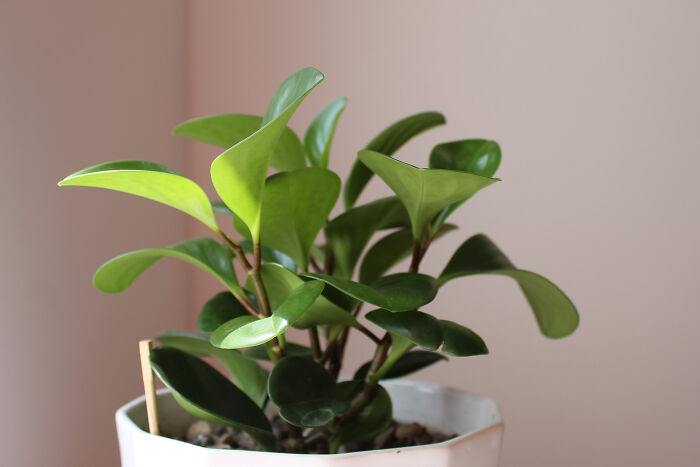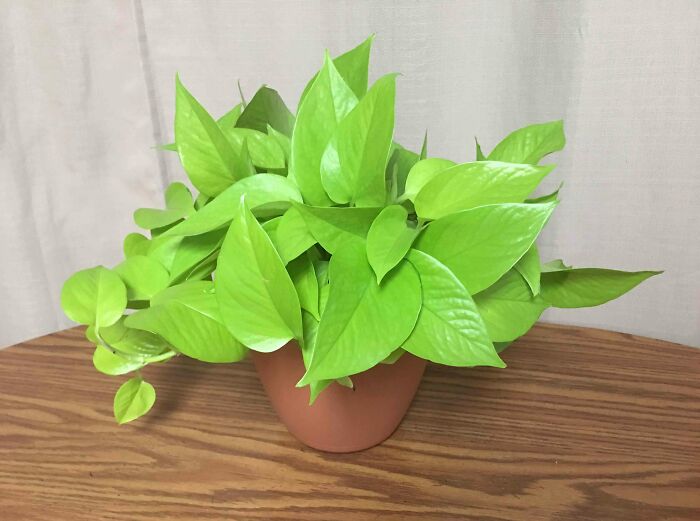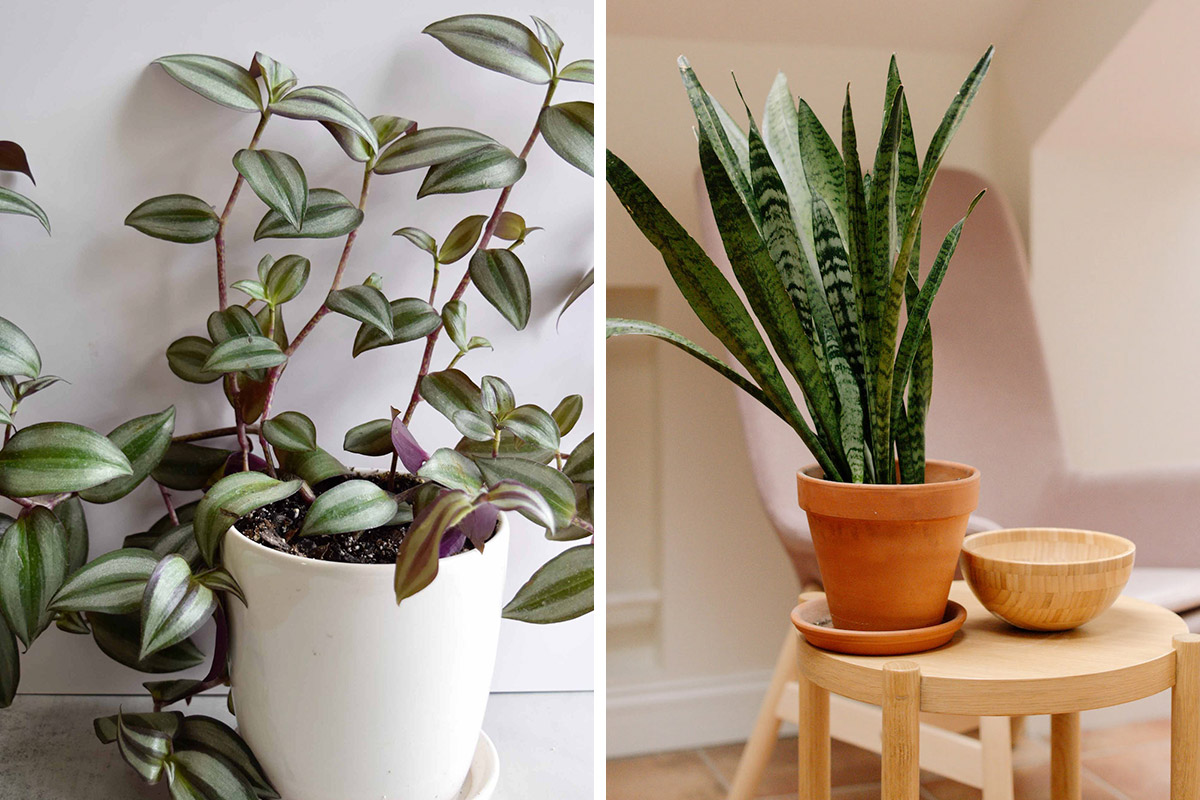
4Kviews
21 Low-Light Indoor Plants That Give Beautiful Results With Low Effort
A houseplant is like a low-maintenance friend who is always there for you. Keeping a plant indoors can be tricky if your home doesn’t get a lot of natural light. We have the perfect solution to this! Have you ever heard of low-light indoor plants?
These houseplants thrive in low-light conditions. They are hardy but still easy to care for. Even though they don’t need light, they can brighten your room. Now, you no longer have to worry about how dim your space is or whether sunlight is coming in through the windows. You can focus on enjoying your indoor plants and adding a touch of fresh greenery to the room.
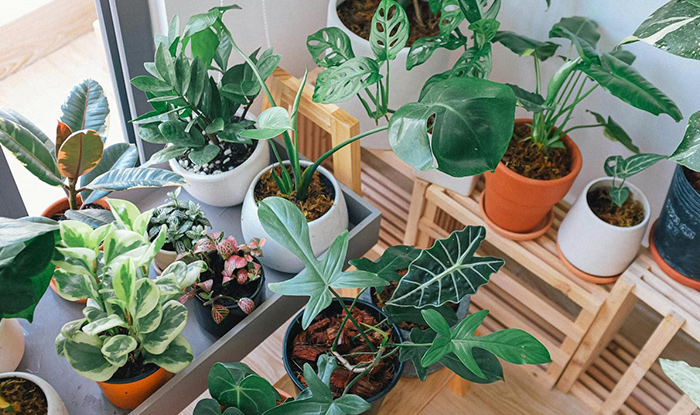 Image credits: Huy Phan
Image credits: Huy Phan
We have compiled a list of the 21 best low-light indoor plants that survive in dark settings. Snake plants and ZZ plants are known for being the easiest and arguably the best indoor plants for low-light settings. However, make sure to check out all the options in this list. You might find some exciting and awesome plants that will help you transform your home into a lush jungle oasis.
What Is Low, Medium, and Bright Light for an Indoor Plant?
Your house might get different levels of light throughout the day. It is essential to understand what amount of sunlight your plants need. Low-light houseplants can get by on 2–4 hours of indirect light. This means that you can place the plants in a room with no windows or a spot far away from a window. Air plants are a prime example of this because they can thrive in low light and don’t need soil to grow.
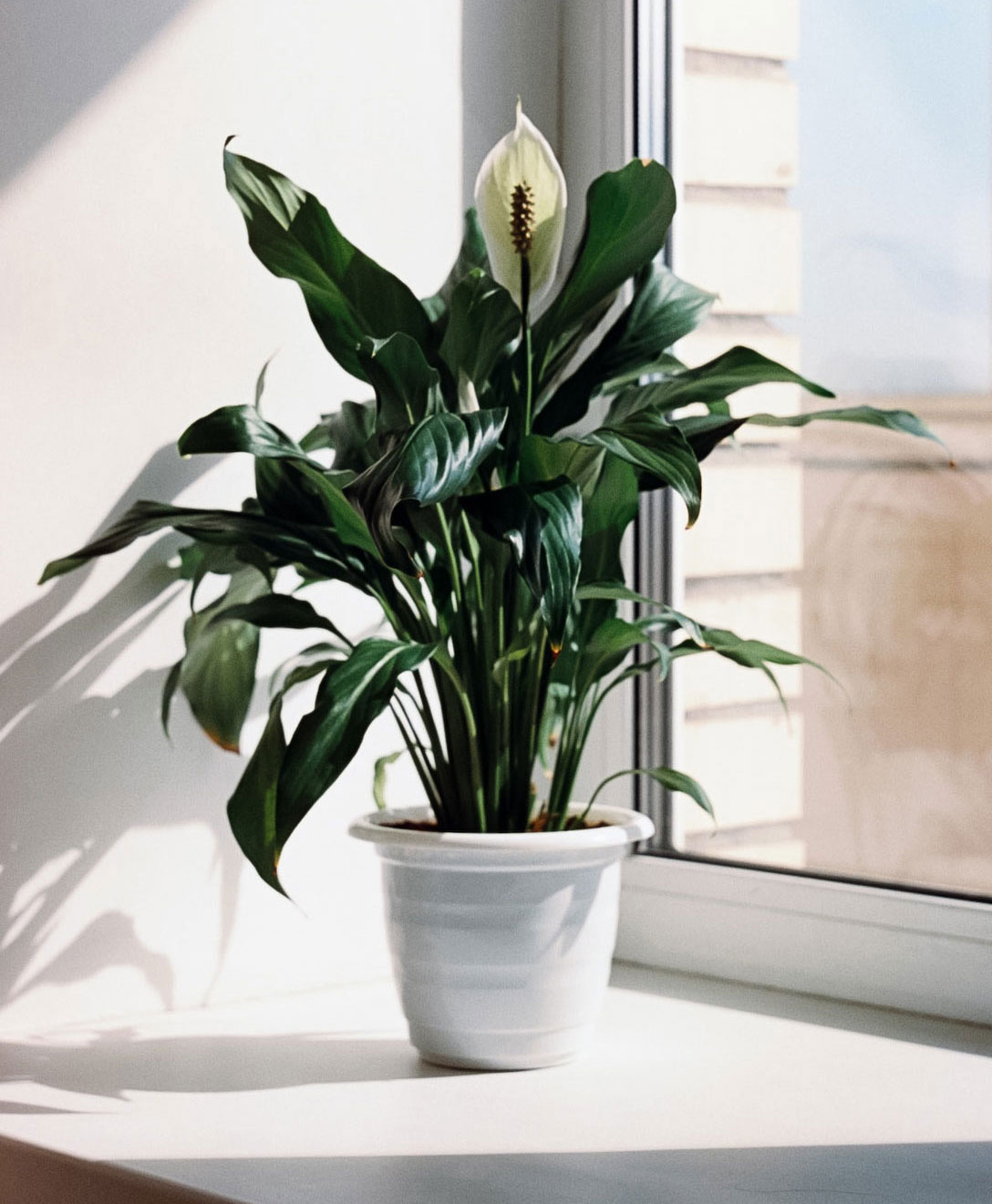 Image credits: Elena Golovchenko
Image credits: Elena Golovchenko
Indoor plants that need medium light should be placed midway in a room where they can receive indirect light for at least 4–6 hours throughout the day. Plants that require bright light should be placed on the windowsill to receive stronger sunlight for 7–8 hours during the day.
No matter what type of plant you are looking for, there is always one that can catch your fancy and fit your preferences. You’ll find one once you dive into our list of 21 easy, low-light indoor plants.
This post may include affiliate links.
Low-Light Boston Fern
A drought-tolerant hardy plant
The Boston fern (Nephrolepis exaltata) is a robust houseplant that can grow in cold climates and survive a drought. It has pale green leaves that sprout from the midrib of the fronds. Each frond can grow 4 feet long and 6 inches wide. These are the best low-light indoor hanging plants because the long fronds look beautiful as they grow. You can pair these calm ferns with brighter flowering plants or interesting and unusual succulents.
Size: 4–5 feet tall
Light: Low-light settings
Water: Twice a week so that the topsoil is moist
Soil: Well-drained moisture retaining soil
Level of Difficulty: Low
Pros
• It is easy to propagate and care for.
• The fern is safe for pets.
• It can survive harsh climates like extreme heat or cold.
Cons
• The fronds can dry up quickly.
• The plant is prone to getting mealybug infestations.
English Ivy Houseplant
A fast-growing foliage plant
The English ivy, called Hedera helix, is a fast-growing aerial climber. It can also be grown outside and planted to help with soil erosion. The plant sometimes bears light green or yellow flowers. It has dark green glossy leaves and can be a decorative vine. You must keep pruning the plant when it becomes 4–5 inches long. Otherwise, it can become too overgrown and wild. It is one of the favorite houseplants of plant lovers.
Size: A healthy length is 4–5 inches long
Light: Lower light or shade
Water: Once a week
Soil: Fertile and moist
Level of Difficulty: Low
Pros
• These plants grow best in shady environments.
• They don't need much care and will thrive even if neglected.
• The ivy can be wrapped around other plants as a decorative houseplant.
Cons
• It is highly toxic to humans and pets. The juice or sap can cause skin irritation.
• It is an aggressive grower and can overtake and kill the growth of other plants.
Spider Plant
A good low-light indoor plant for beginners
The Spider plant (Chlorophytum comosum) is a great low-light plant for newbies. It is easy to propagate, grows despite neglect, and can survive in many climates. The houseplant’s name comes from the long trailing leaves resembling spider legs. They grow in clumps and have solid green and white leaves. Their thick, fleshy roots can survive prolonged periods of no watering. If you’re lucky, you might get small star-shaped white flowers growing at the end of the stems. It is one of the few air-filtering plants you can keep in your house.
Size: 12–15 inches tall
Light: Medium light
Water: Once a week
Soil: General potting soil
Level of Difficulty: Low
Pros
• It can purify the air and absorb chemicals such as formaldehyde, xylene, benzene, and carbon monoxide.
• It is the most popular houseplant among beginners.
• They are easy to propagate and can be grown from roots or seeds.
• It is pet-friendly and non-toxic.
Cons
• The houseplant is prone to get ‘tip burn’ when the leaves start browning at the ends.
ZZ Plant
A resilient low-light indoor plant
The ZZ plant (Zamioculcas zamiifolia) is an eye-catching houseplant. It is known for its glossy, broad, oval-shaped leaves that grow upward. Due to the spotless waxy leaves, this plant almost looks fake. You never have to worry about watering this small, low-light indoor plant because it grows from rhizomes. Rhizomes are the plant’s main stem, which runs horizontally under the ground and can help the plant store water under the soil. That’s why you can get away with watering the ZZ plant once every few weeks.
Size: 2–4 feet tall and 2–4 feet wide
Light: Low to bright indirect light
Water: Once every two weeks
Soil: Well-draining soil
Level of Difficulty: Low
Pros
• These plants thrive even with less care or maintenance.
• They are beautiful with glossy leaves and can brighten up your room.
• They don't require regular fertilizing.
Cons
• The ZZ plant is toxic to pets and humans if ingested.
Low-Light Snake Plant
An air-filtering houseplant
The snake plant (Sansevieria trifasciata) is a native of Asia and Africa. It is strategically placed in the home and is said to bring good luck. The plant is famous for its hardy nature and yellow-green sword-shaped leaves. The main thing about growing this houseplant is that you need to pay attention to the pH of the soil. It prefers soil between 5.5 and 7.0 on the pH scale. Snake plants can also purify the air by absorbing toxins through their leaves and producing oxygen.
Size: 1–3 feet
Light: Low or moderate
Water: Once every month or when the soil is dry
Soil: Well-draining soil that’s 5.5–7.0 on the pH scale
Level of Difficulty: Low
Pros
• It is a drought-tolerant plant that you don’t have to worry about watering.
• It helps to filter the air and remove toxic pollutants.
Cons
• It is toxic to pets and humans and can cause mild tongue swelling if consumed.
• It is prone to root rot if it’s excessively watered.
Even if you somehow kill the snake plant, its hardy nature won't let it fully die. It is prone to making a comeback like these plants.
My snake plant just stays the same, doesn't die, but doesn't grow either. Any advice from the plant people out there?
The Silver Inch Indoor Plant
A colorful creeping plant
The Silver inch plant is known by many names, such as inch plant, zebra plant, or Tradescantia zebrina. It has bright greenish-purple leaves with wide silvery stripes. The rich purple color can make a beautiful addition to your room. The inch plant also produces boat-shaped flowers, sometimes white or lavender, but they might not appear on indoor plants. You can turn these beautiful flowers and leaves into art. This plant can be grown in a hanging pot so that the foliage spreads and grows well.
Size: 6–12 inches
Light: Low to moderate indirect sunlight
Water: Every two or three days
Soil: Well-drained, nutrient-filled soil
Level of Difficulty: Low to moderate
Pros
• It produces gorgeous flowers.
• The plant has beautiful colored leaves which stand out.
Cons
• Its watery sap can cause skin inflammation.
• These plants are known to struggle with cold climates.
Pothos Houseplant
A popular tropical plant
Pothos, also called Epipremnum aureum, is a large, low-light indoor plant. It can be grown in a hanging pot because its beautiful leaves will cascade down. It has heart-shaped waxy leaves that are bright green and covered with yellow or white patterns. Since pothos survive well in low-light conditions, you can place them in corners or shady spots in the house. Pothos are prone to insect infestations, so you should keep an insecticide handy.
Size: Up to 70 feet when grown outdoors
Light: Low light
Water: Once a week when the soil is partly moist
Soil: Well-draining soil
Level of Difficulty: Low
Pros
• It grows fast and creates a lovely cascading effect.
• The plant can be propagated easily from the stem.
• The yellow and white patterns on the leaf create a bright, colorful effect.
Cons
• Pothos should be kept away from other plants because it can strangle their growth.
• It is slightly toxic to humans and animals.
Speaking of the beautiful foliage of this plant, you have to check these photographs that showcase the beauty and diversity of leaves.
These are my favorite common houseplants, low maintenance and they grow like crazy.
Arrowhead Vine
A unique household vine
Arrowhead vine (Syngonium podophyllum) gets its name from the distinct arrow-shaped leaves. They come in different varieties and colors, such as lime green, dark green, or pink. This low-light indoor plant needs partial direct sunlight for a few hours daily. You can grow the vine by curling it around a stake or a firm plant. Make sure to keep it at a higher level out of reach of pets and children since the plant is toxic. Like the Arrowhead vine, many beautiful plants, like moonflowers, are fun to grow yet slightly toxic. You can plant them, but learn to look after them carefully.
Size: 3–6 feet tall and 1–2 feet wide
Light: It needs partial direct light
Water: Twice a week
Soil: Moist, well-draining soil that is slightly acidic
Level of Difficulty: Moderate
Pros
• You can grow it with other plants so the beautiful vine circles them.
• Its unique leaves are attractive to look at.
• It grows fast and doesn't need much pruning.
Cons
• It doesn't like dry conditions, and the soil needs to remain moist.
Peace Lily
A plant that lets you know when it’s thirsty
Peace lilies are from the Araceae family. They are a popular houseplant to give as a gift. They are hardy and provide easy signs to understand when they need to be watered. You have to keep an eye out for their telltale droop. The Peace lily can also purify the air and break down toxic gases like carbon monoxide and formaldehyde. They are known for their lush green leaves but can quickly lose foliage. You can use these fallen leaves to make cute vignettes as artwork.
Size: 1–4 feet tall
Light: Low light or partial shade
Water: 3–4 times a week
Soil: Firm and well-draining soil
Level of Difficulty: Moderate
Pros
• It is a perfect gift for someone because it can let the person know when it needs to be watered.
• These plants grow even in harsh conditions.
• They produce an elegant white flower.
Cons
• They are toxic to humans and animals.
• This plant is prone to root rot and needs well-draining soil.
Bird’s Nest Fern
Best low-light indoor plants for bathrooms
Bird’s nest fern (Asplenium nidus) is easy to care for and grows bright and long green fronds. It doesn't need a lot of light and can even grow in artificial light. When they get enough light, the lance-shaped fronds sometimes develop ripples. Since these plants require less light and can thrive in warm, humid environments, they are perfect for bathrooms or enclosed spaces. You can look after this fern by fertilizing the soil once a month, especially during the growing season.
Size: 3–5 feet tall and 2–5 feet wide
Light: Shady or low light
Water: 2 times a week
Soil: Loamy or moist soil
Level of Difficulty: Low
Pros
• It is a perfect houseplant to have in your bathroom. You can use these bathroom lighting ideas to help keep the plant healthy.
• It is a pet-friendly plant and safe for humans.
• The plant doesn’t take up much space and can be placed anywhere.
Cons
• The plant can dry out easily if the surroundings aren’t humid and the soil isn't moist.
Aglaonema
Vibrant low-light plants
Aglaonemas are well-known in Asia as plants that bring good luck and fortune. They are colorful and come with strikingly patterned leaves. These plants don’t need direct light and can grow in dimly lit rooms, offices, or bedrooms. You can pair these houseplants with creative plant pots to add to the decor of your room. A cool thing about these houseplants is that they produce a fleshy berry that ripens and turns red. You can also propagate them easily with cuttings taken from the basal shoots.
Size: 1–3 feet tall
Light: Shade or low light
Water: Once every two weeks
Soil: Moist
Level of Difficulty: Low
Pros
• They can survive in low and high humidity conditions. Hence, you can place them pretty much anywhere.
• Due to the large variety of strains, you can pick from many vibrant colors.
• They produce striking fruits.
Cons
• The plant is toxic to animals and humans.
Calathea Prayer Plant
A low-light indoor plant safe for cats and dogs
Calathea is also known as the prayer plant. It earns this name due to its tendency to fold or ‘pray’ its leaves during the night. This is because of nyctinasty, which is how plants are known to respond to the movement of the sun. This houseplant is well-loved because it’s perfectly safe for pets and humans. The two most common varieties of the prayer plant are the Calathea ‘Medallion’ (Calathea veitchiana) and the Calathea ‘Rattlesnake’ (Calathea lancifolia). A fun plant fact is that the Calathea leaves are used to make handicrafts and to wrap food in Brazil!
Size: 3–4 inches
Light: Moderate light
Water: 1–2 times a week when the topsoil gets dry
Soil: Potting soil that is rich in nutrients
Level of Difficulty: Low
Pros
• It is safe for animals and humans.
• Their foliage is beautiful because of their striking leaves and patterns.
Cons
• The tap water’s fluoride might affect the plant, so use bottled water.
Bromeliads Low-Light Houseplant
A plant that can do well in a shallow pot
The Bromeliad is a popular houseplant that comes from the Bromeliaceae family. These flowering plants are native to the American subtropics. Its leaves are wide and sword-shaped. It provides an exotic touch to the home because it produces thick foliage and a cluster of flowers. After the cluster forms, you can use the old and dried blooms to create colorful flower mandalas. Bromeliads don’t need deep pots or thick potting soil. They do well in shallow pots, too. Orchid mix soil is a good option for these low-light indoor plants.
Size: 2–3 feet
Light: Medium light
Water: Once every week
Soil: Porous soil
Level of Difficulty: Low
Pros
• It doesn't need much care, and the plant thrives in shallow soil.
• The houseplant isn't toxic to pets and people.
• Its flower will provide a bright pop of color.
Cons
• Bromeliads are prone to root rot.
Dieffenbachia
A tall, low-light indoor plant
Dieffenbachia is a houseplant called a dumb cane or leopard lily. It is a tropical flowering plant that grows to immense heights. Dieffenbachias can grow up to 10 feet tall, but the average indoor plants may grow up to 3 feet. This plant has a straight stem and leaves with white spots. Although the plant prefers bright light, they can grow well in lower-light conditions. You can help your plants by keeping them away from an open window because direct sunlight can burn their leaves. If you’re worried about getting the perfect light conditions for this houseplant, you can test these plant lamps.
Size: 3–10 feet tall
Light: Low to bright light
Water: Once every two weeks
Soil: Well-drained soil with peat
Level of Difficulty: Low
Pros
• The plant can adapt to low-light and shady conditions.
• It is fast-growing and produces lush, vibrant leaves.
Cons
• The plant leaves contain calcium oxalate crystals. When ingested, those can cause skin irritation and other problems for animals and humans.
Lucky Bamboo Houseplant
A plant that brings good luck
Lucky Bamboo (Dracaena sanderiana) is a popular houseplant often given as a gift. It doesn’t need much direct sunlight and can be grown in water. Although it isn’t a type of bamboo plant, it gets its name from the bamboo-like appearance of its stalks. Many people like to place these houseplants in unique ceramic planter pots or display stands. The stalks often grow straight but sometimes become curly, which adds to its mesmerizing look.
Size: 2–5 feet
Light: Lower light conditions
Water: The roots should be submerged, and you should change the water every few weeks
Soil: Loamy soil that should not dry out between waterings
Level of Difficulty: Low
Pros
• It is a perfect gift for people and requires little maintenance.
• This low-light indoor plant is considered lucky.
• The plant can remove benzene, trichloroethylene, and formaldehyde from the air and act as a natural humidifier.
Cons
• You must change the pot’s water every few weeks to prevent stagnation.
Cast Iron Plant
A hard-to-kill, low-light indoor plant
Cast Iron plant (Aspidistra elatior) gets its name from being a hard-to-kill plant because of its ability to survive even in filtered light. This plant has beautiful green leaves and produces white or purple flowers. It can also purify the air and hardly ever attracts insects. You can place it in an east or west-facing room that gets low light, and it will thrive. If you are worried about forgetting to water it, try these self-watering animal planters that look cute and keep your plant fresh.
Size: 2–3 feet tall
Light: Low
Water: Once in two weeks
Soil: Porous soil
Level of Difficulty: Low
Pros
• It is safe for animals and humans.
• This rugged plant can survive a lot of neglect.
• It produces colorful flowers.
Cons
• The leaves can get burnt if placed in direct light for too long.
Fernwood Mikado
A compact hybrid plant
Sansevieria Fernwood Mikado is a hybrid of the snake plant and comes with dark green leaves that bear light green tiger-print striping. It grows in a way that its leaves create an attractive fountain-like shape. Due to the flexibility of the leaves, some people even braid the leaves to make the plants look more attractive. This plant can be placed in dark rooms because it doesn’t need much sun.
Size: 5–6 inches
Light: Low light
Water: Twice a week and allow the soil to dry out between waterings
Soil: Well-draining soil
Level of Difficulty: Low
Pros
• The plant can grow in harsh conditions.
• Its flexible leaves can be braided to create an eye-catching look.
• The plant doesn’t need extra fertilizing.
Cons
• It is prone to getting a mealybug infestation.
Be prepared for this low-maintenance plant to win you over and motivate you to buy even more plants. Then, you’ll end up intensely relating to this comic about buying plants.
Philodendron
A plant with many varieties
The Philodendron plant comes from the Araceae family. It has hundreds of species with large, green, glossy leaves. Too little light can cause the leaves to grow spaced out, whereas a lot of direct sunlight can turn the leaves yellow.
The two main types of Philodendron that you can choose from are vining and non-climbing houseplants. The vining species grow several feet tall, whereas the non-vining ones produce thick foliage. You can pair these large houseplants with tiny teacup gardens to create a whimsical green space in your home.
Size: 1-3 feet tall
Light: Moderate light
Water: When the top inch of soil has dried
Soil: Loose, acidic soil with rich organic matter
Level of Difficulty: Moderate
Pros
• It has many colorful varieties to choose from.
• The vining and non-climbing species grow significantly and can beautify the room.
Cons
• The plant needs just the right amount of light to grow.
Anthurium
A plant that grows slowly
Anthuriums are from the Araceae plant family. They are native to Central America, North and South America, and the Caribbean. These low-light plants are the best houseplants for people who can give them enough care and attention. These houseplants can typically survive for five years indoors as long as they are cared for well. They grow slowly but produce bright red, green, and white flowers. The flowers are known for their distinctive heart-shaped designs. You can appreciate the beauty of its flowers and other plants in this monochromatic photography series called ‘Botanicals.’
Size: 12–18 inches tall
Light: Moderate
Water: Once a week
Soil: Acidic and porous soil
Level of Difficulty: Average to high
Pros
• They have attractive flowers that bloom all year round.
• The plant can be grown in highly humid rooms.
Cons
• It needs a lot of care and attention to grow smoothly.
Peperomia Green
A plant with fleshy, succulent-like leaves
The Peperomia plant is also called baby rubber plant, pepper elder, radiator plant, shining bush plant, and emerald ripper pepper. It is a tropical plant that can handle low light easily. You can use it as an ornamental plant because it has textured leaves in red, green, gray, and purple colors. It is easy to grow because of its leaf’s semi-succulent properties. They can store moisture in their fleshy stalks to fall back on when needed.
Size: Up to 2 feet
Light: Moderate
Water: Once in two weeks
Soil: Loose, well-draining soil
Level of Difficulty: Low
Pros
• It is a non-toxic, pet-friendly plant.
• The succulent-like leaves store water for long periods.
Cons
• It needs a slightly warmer temperature to grow.
Neon Pothos
A long vine that doesn’t need pruning
Neon Pothos (Epipremnum aureum) produces neon green, heart-shaped leaves on a vine that can grow up to 10 feet long. It is easy to grow and can thrive in low indirect sunlight. The plant doesn’t require much maintenance and can bounce back even after not being watered for weeks. You don’t have to prune its leaves, but you can if you want its growth to stay in control. All parts of this plant are considered toxic to animals and humans, so you should not ingest it by mistake. Delphinium is another plant like the Neon Pothos, which is poisonous but gorgeous.
Size: Up to 10 feet tall
Light: Low
Water: Once every two weeks
Soil: Loamy and well-draining
Level of Difficulty: Low
Pros
• It doesn’t need much maintenance or pruning.
• The plant isn't fussy about the type of soil it is planted in.
• It has a bright color and looks lovely.
Cons
• It is toxic to humans and animals and should be kept out of reach of children.
Now that you know which houseplants don’t need sunlight, you can transform your house into a completely green place. Here are some easy tips to make the process fun and straightforward.
Bonus Tips to Care for Low-Light Indoor Plants
These are the best ways to care for low-light indoor plants:
- Hanging planters can help you save floor space and give your plants enough indirect sunlight.
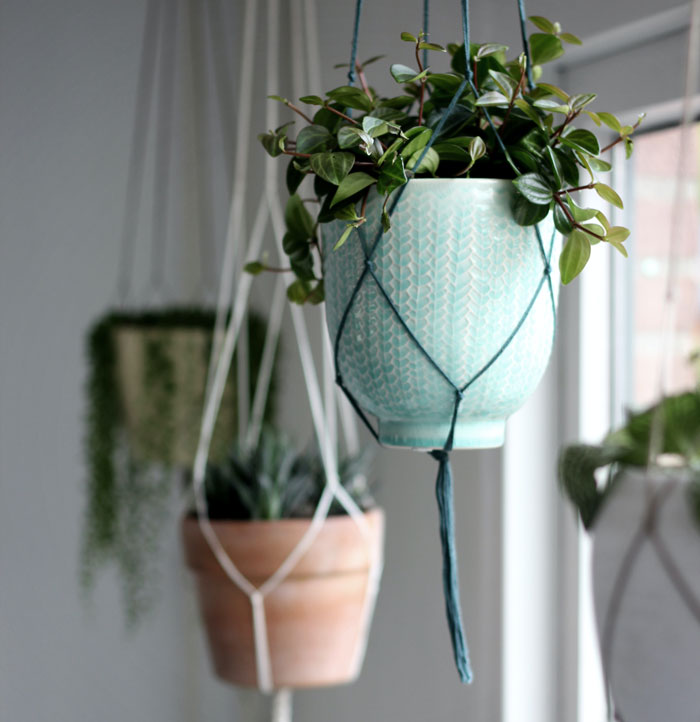 Image credits: Angèle Kamp
Image credits: Angèle Kamp
- LED grow lights consume less electricity, don’t produce too much heat, and can help plants grow in very dim conditions.
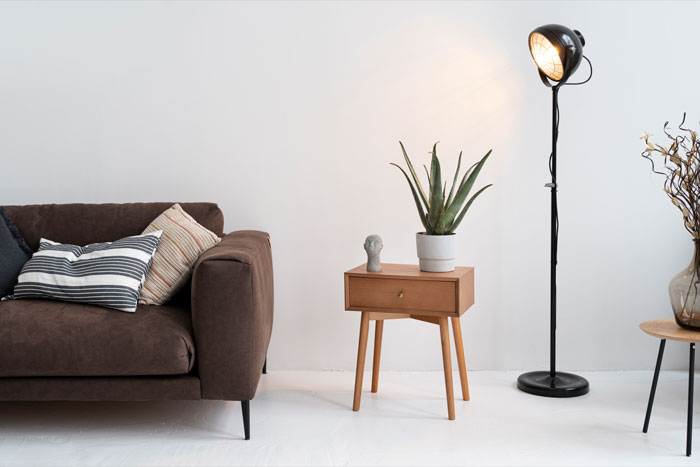 Image credits: freepik
Image credits: freepik
- Combine hanging plants with vines by attaching a thin rope to the floor for the creeper to twirl around.
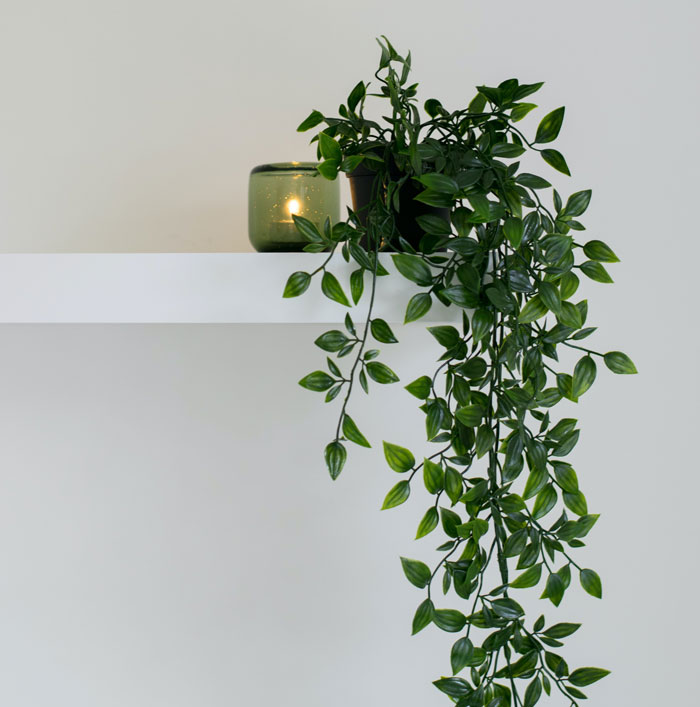 Image credits: Jessica Arends
Image credits: Jessica Arends
- Use mirrors to divert light towards the plants if you feel they aren’t getting enough of it.
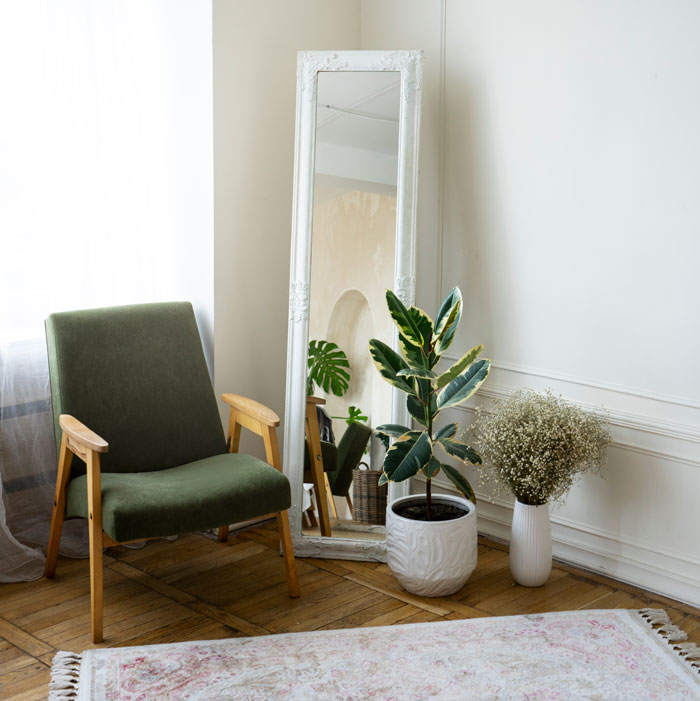 Image credits: freepik
Image credits: freepik
Pick a Low-Light Plant to Brighten the Indoors
Having many houseplant options that can grow with less light, water, or fuss might seem like a miracle. But miracles do happen! Now that you have all these choices, feel free to create a garden in every single one of your rooms! We hope you enjoy growing these mysterious plants and hope to see pictures of your favorite low-light houseplant in the comments.
FAQs
What Are the Best Low-Light Indoor Plants?
The best indoor plants that can thrive in low light have broad and thin leaves that efficiently use sun energy. They are more capable of using the soil’s nutrients than compared to shade-intolerant plants. Snake, ZZ, Pothos, and Peace Lily are just some of the best low-light plants to grow indoors.
Where to Buy Low-Light Indoor Plants?
You can buy low-light houseplants in most nurseries or through online shops. You can also grow them through cuttings or seeds.
How to Maintain Indoor Plants in Low Light and Heat?
The best way to maintain houseplants indoors is to understand their light and water requirements. Low-light plants can tolerate shade and thrive even in harsh conditions.
What Is Indirect Sunlight for Indoor Plants?
Indirect sunlight is filtered through closed windows, curtains, or household objects. Low-light indoor plants don’t need to be placed directly in the sunlight to grow.
This is a great article! Thanks for including info about pet toxicity!
Thanks for replying! Your feedback means a lot. Let me know if you end up growing any :)
Load More Replies...True! Them being pet-safe is really important
Load More Replies...This article is spot on! Lots of good information for new plant parents or for people who have houseplants but have never taken the time to actually LEARN about them. I have several varieties of most of these, and am considered pretty knowledgeable in this area ~ I’m bookmarking your fantastic article and will send it to the people who come to me for advice. Well done!
This is a great article! Thanks for including info about pet toxicity!
Thanks for replying! Your feedback means a lot. Let me know if you end up growing any :)
Load More Replies...True! Them being pet-safe is really important
Load More Replies...This article is spot on! Lots of good information for new plant parents or for people who have houseplants but have never taken the time to actually LEARN about them. I have several varieties of most of these, and am considered pretty knowledgeable in this area ~ I’m bookmarking your fantastic article and will send it to the people who come to me for advice. Well done!
